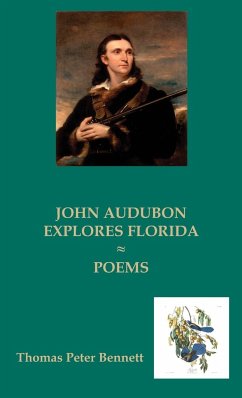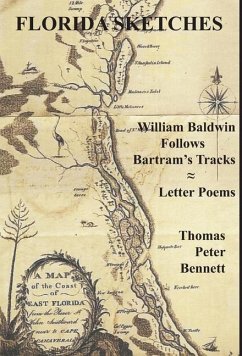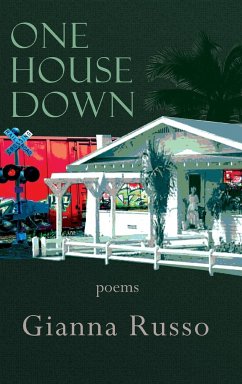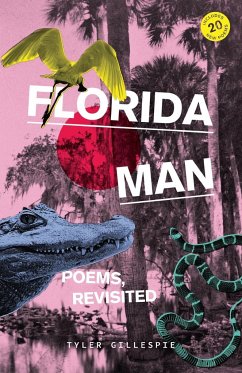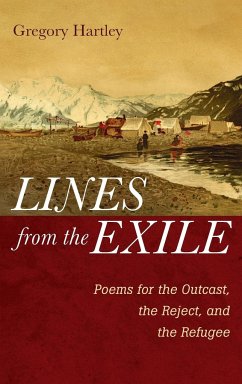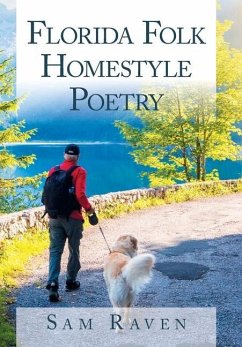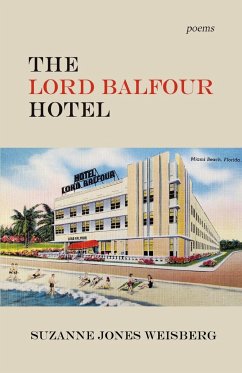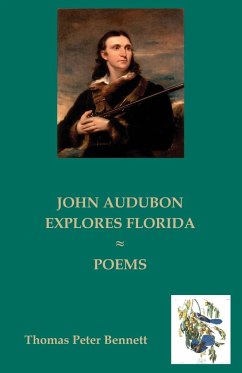
JOHN AUDUBON EXPLORES FLORIDA
POEMS

PAYBACK Punkte
11 °P sammeln!
After the publication of the first volume of The Birds of America and its heralded reception in Philadelphia, John Audubon and his two assistants departed in late September 1831 to the new Florida territory to pursue, collect and draw Florida waterbirds and regional exotics for Audubon's Great Work. Enroute, they established a "base camp" In Charleston with John Bachman a resident. Audubon learned of his election to the Academy of Natural Sciences and began his correspondence and writing about his daily exploration adventures. Using government ships and accomodations, they sailed for St. Augus...
After the publication of the first volume of The Birds of America and its heralded reception in Philadelphia, John Audubon and his two assistants departed in late September 1831 to the new Florida territory to pursue, collect and draw Florida waterbirds and regional exotics for Audubon's Great Work. Enroute, they established a "base camp" In Charleston with John Bachman a resident. Audubon learned of his election to the Academy of Natural Sciences and began his correspondence and writing about his daily exploration adventures. Using government ships and accomodations, they sailed for St. Augustine: explored and collected bird specimens in North Florida, and Audubon drew birds for his Great Work. Next, they sailed for Key West, stopping for collecting at Keys along the way. They spent time in Key West with great success and in late May 1832 the Audubon party returned to Charleston and Philadelphia. Audubon continued his journals and incorporated his drawings, paintings into his "great work," The Birds of America. ¿¿After the publication of the first volume of The Birds of America and its heralded reception in Philadelphia and London, Audubon departed from England in July 1831 for his next adventure: to pursue Florida waterbirds and other regional exotics. Accompanying him on the ship were his wife Lucy and Henry Ward, a young English taxidermist whom Audubon had engaged to assist in collecting and preserving specimens during the Florida expedition. Their first destination was Philadelphia, where Audubon hired George Lehman, a Swiss landscape painter, to accompany him and Ward in Florida. Mrs. Audubon departed for Louisville. Audubon also arranged with G.W. Featherstonehaugh, the editor of The Monthly American Journal of Geology and Natural Science, to publish reports of their Florida journey.In late September 1821, Audubon and his two assistants traveled to Washington. Here, the Secretary of the Navy and the Secretary of the Treasury approved the party's travel out of Charleston on a government revenue cutter to the Floridian coastal outposts between St. Augustine and Key West. The party left Washington and traveled by various modes of transport until, in Audubon's words, they "at length approached Charleston . . . with unfeigned delight."Audubon's expedition was intended to last from late November 1831 to the end of May 1832. It included the north Florida area, which had been explored by William Bartram in his Travels, and it would continue along the Atlantic coast to Key West. However, circumstances changed, and Audubon's party first explored slightly southward near St. Augustine, then around the St. Johns River, from November 20, 1831, until March 5, 1832. They returned to Charleston and spent a month with Bachman, then traveled directly to the Florida Keys, where they explored from April 15 through May 31, 1832.For Audubon, as reflected in his letters and journal entries, the north Florida exploration was less productive and less enjoyable than their exploration of the Florida Keys. Both areas prompted his many paintings, writings, and letters about Florida's birds and natural history. These inspired and informed John Audubon Explores Florida: Poems.



